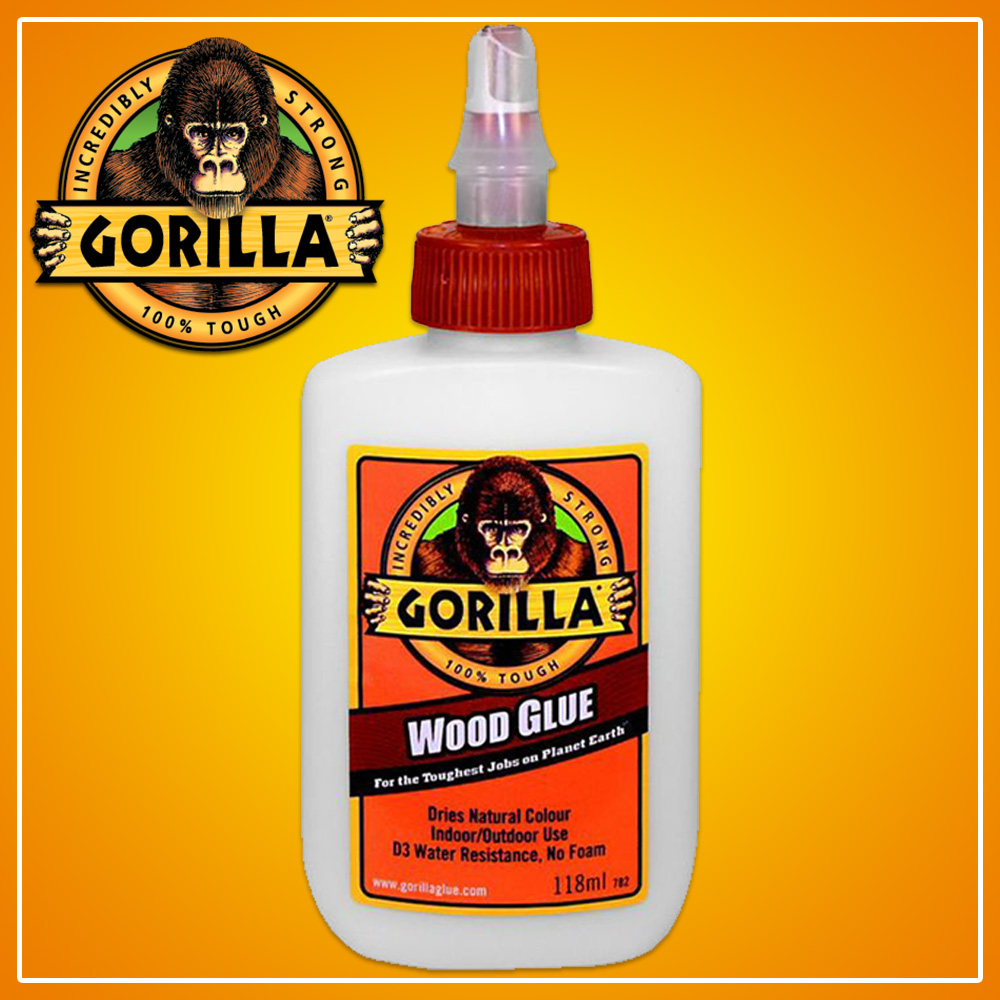

Nitromethane, despite its reputation for being toxic, can not be used on poly finishes or nitro finishes because it dissolves them.

Despite the fact that the binding expands at lower temperatures, it does not become completely malleable or soft until temperatures reach 81-82 degrees Celsius. The temperatures I give may not be absolute, and they are not always measured.
#GORILLA WOOD GLUE SKIN#
However, if it is truly soft and stretched, the skin should be fine. Most finishes will range between 84 and 86 points in the coming weeks. When I tested celluloid and ABS in the lab, they seemed to respond to almost the same temperature. Then, the heat is focused directly along the binding with the help of a reducer nozzle. I use my Makita heat gun to bind up to a uniform temperature by putting a fairly large area of binding up to it. If you put it in the microwave for a few minutes while it expands, you might have to return it to the oven to loosen it up. The issue I have is that heating and regluing it is only addressing the symptom, not the problem. This is due to the plastic’s constant offgassing of its solvents, which causes the binding to shrink and, as a result, leaves a loose lump on the guitar’s side. If the finish is polyurethane, CA glue would be recommended, waxing the finish before applying it and then scraping the channel clean before gluing it. If you’re attempting to reattach an original binding, solvent-based adhesives such as Duco or WeldOn 16 aren’t the best option. It’s a hybrid of crazy glue and gorilla super glue. Polyurethane glues can be problematic in one way: they expand when dried. If you are using Gorilla Glue on a guitar, you cannot make it a specific case. It is as simple as aligning the tape and clamped it to the tight side.

Can I Use Gorilla Glue On Guitar?ĪLWAYS USE GORILLA GLUE ON GUITAR. It can be used on hardwood, softwood, and wood composite materials indoors and outdoors.Įxcessive glue may be found around the binding of the guitar (e.g., not the veneer) heat, wipe, scrape, or sand it away as the best option for removing the glue. Gorilla Wood Glue is a water-based, solvent-free polyvinyl acetate (PVA) glue that is non-toxic. Because of the toxic substance in the glue, it expands and hardens, causing gastrointestinal obstruction. Getting yourself into an extremely dangerous situation by ingesting Gorilla Glue is extremely dangerous. Despite the fact that it is not toxic, diphenylmethane diisocyanate (MDI) is a catalyzing agent found in these glues. Gorilla Glue and Elmer’s ProBond are popular polyurethane-based adhesives, but they can cause serious side effects – including death – if not properly evaluated and treated. It is important to be careful when using it on an acoustic guitar, and to follow the directions carefully. Gorilla glue is a strong adhesive, and it can be difficult to remove if it is applied to the wrong surface. It is also important to allow the glue to dry completely before playing the guitar. The glue should be applied to the area to be repaired, and not to the surface of the guitar. When using gorilla glue on an acoustic guitar, it is important to use a small amount, and to apply it carefully. Gorilla glue is a strong adhesive, and it is important to be careful when using it on an acoustic guitar. It is known for its strong hold and versatility, but is it safe to use on an acoustic guitar? Acoustic guitars are delicate instruments, and using the wrong glue can damage the finish, or even the structure of the guitar. Gorilla glue is a popular adhesive used for a variety of purposes, including crafting and repairs.


 0 kommentar(er)
0 kommentar(er)
